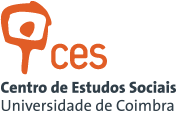CES Summer School
Espaços e Transições: Partilhando biografias e projetos na reinvenção do Centro Comercial Avenida
27 a 29 de janeiro de 2014
CES-Coimbra e Departamento de Arquitetura da Universidade de Coimbra
Apresentação
Os recentes processos de “regeneração urbana” postos em prática pelas autarquias e autarcas de cidades como Porto ou Coimbra, a coberto dos processos de combate à desertificação dos centros das cidades ou da reversão dos processos de ruína dos seus edifícios, têm promovido e institucionalizado processos de gentrificação urbana. Na cidade do Porto, por exemplo, e após investimentos massivos no Quarteirão das Cardosas (a pretexto de instalação de um Hotel de luxo), os habitantes e comerciantes que ocupavam os edifícios que constituem esse quarteirão viram as suas habitações e lojas adquiridas ou expropriadas pela Sociedade de Reabilitação Urbana, forçando a sua saída para as áreas periféricas. Identicamente noutras cidades e áreas urbanas, edificado que outrora se encontrava ocupado e habitado encontra-se hoje desabitado ou desocupado. Mesmo quando os processos de requalificação urbana de iniciativa autárquica ou privada procederam à recuperação do edificado, as estratégias da sua recuperação apontaram para investimentos imobiliários e modelos de habitar que não encontram agora habitantes ou comerciantes que neles invistam; este conjunto de erros ocorre porque os valores “patrimoniais” não consideraram os habitantes, os comerciantes, os utilizadores, os frequentadores como património a par das pedras, cantarias, soalhos, coberturas. Num sentido oposto tem-se assistido a um conjunto de pequenas iniciativas de recuperação de edificado promovido por habitantes ou comerciantes que pretendem manter-se nos centros urbanos com as suas casas de hóspedes, restaurantes, pequenos hotéis, ou comércio local; essas iniciativas, que apostaram na pequena escala e na manutenção de actividades de comércio tradicional ou inovador ainda permitem vivências num espaço que se encontra em grande parte desertificado.
O presente curso ocupar-se de um caso paradigmático de envelhecimento de uma estrutura significativa da Avenida Sá da Bandeira em Coimbra: o Centro Comercial Avenida. Construído em meados dos anos 80, num período em que os centros comerciais ainda se construíam em zonas urbanas centrais, substituiu o Teatro Avenida que tinha sido construído em 1893. Após anos de pleno funcionamento como área de comércio qualificada, começou a experienciar, sobretudo a partir de 2000, um franco desinteresse quer por parte dos comerciantes (talvez pelo aparecimento de competitivas áreas comerciais como o Centro Comercial Dolce Vita) quer por parte dos consumidores (que se deslocaram para a Rua Ferreira Borges). E assim chegamos à actual situação em que a sua quase exclusiva utilização se deve a grupos urbanos minoritários, que vêm no edifício a possibilidade de implantar os seus espaços de culto, de comércio, de troca, enfim, os seus espaços de referência urbana. Considerando as particularidades de localização e articulação entre a cota baixa da Av. Sá da Bandeira e a cota alta onde se localizam os quarteirões residenciais do Alto da Conchada, o Centro Comercial Avenida mantém um alto potencial do ponto de vista urbano e arquitectónico. Mas talvez o seu maior potencial esteja precisamente na possibilidade que a sua mais recente ocupação lhe confere: potencial cultural de alargamento de horizontes, potencial humano de serviços que já não se encontram noutros locais, potencial de resistência à invasão das lojas de marca, potencial de manutenção de um edifício em contra-ciclo com a desertificação generalizada, potencial paisagístico, histórico, social.
Assim, ESPAÇOS E TRANSIÇÕES: Partilhando biografias e projectos na reinvenção do Centro Comercial Avenida é um curso de formação sobre pesquisa partilhada entre as ciências sociais, a arquitectura e o trabalho audiovisual. Este pretende levantar um conjunto de questões tanto conceptuais e teóricas como prospectivas e técnicas sobre pesquisa partilhada a propósito de um espaço arquitectónico da cidade de Coimbra a ser reinvestido socialmente. O conteúdo do programa levanta um conjunto de questões de índole sociológica, antropológica, metodológica, urbana e arquitectónica que permitem o enquadramento para uma outra actividade - o registo e tratamento de imagens a incluir no filme documentário do projecto que lhe dá origem: “Pesquisa das migrações e abordagem biográfica: construindo um trabalho em colaboração no contexto português”. As comunicações previstas e o trabalho/fotográfico/fílmico do terceiro dia do curso pretendem responder conjuntamente às seguintes questões: Que respostas pode dar hoje o CCA aos processos de regeneração urbana e que papel pode caber à arquitectura pensada como proposta de inclusão cultural e social? De que poéticas se pode socorrer a pesquisa interdisciplinar partilhada para responder simultaneamente às articulações urbanas e sociais implícitas no projecto sobre imigração em Coimbra? Como proceder a processos de requalificação que vêm no potencial humano da multi-culturalidade e poli-etnicidade desta cidade o seu programa de intervenção?
A resposta a estas questões estará, no final, tanto nas comunicações dos convidados, como nas imagens produzidas pelos inscritos e voluntários do projecto sobre imigração, pensando que o espaço e os momentos da pesquisa partilhada são precisamente espaços de debate e convergência, uma possibilidade entre tantas de imaginar futuros diversos, onde a diversidade cultural e a integração social correspondem a uma convivência quotidiana de alto valor criativo e artístico nas cidades concretas onde vivemos.
INSCRIÇÃO GRATUITA MAS OBRIGATÓRIA
Para efeitos de Admissão na Ordem dos Arquitectos, a participação neste Curso de Formação equivale a 6 crédito(s) de “Formação Opcional em Matérias de Arquitectura”.
Organização: Paulo Providência, Elsa Lechner, Giovanni Allegretti

